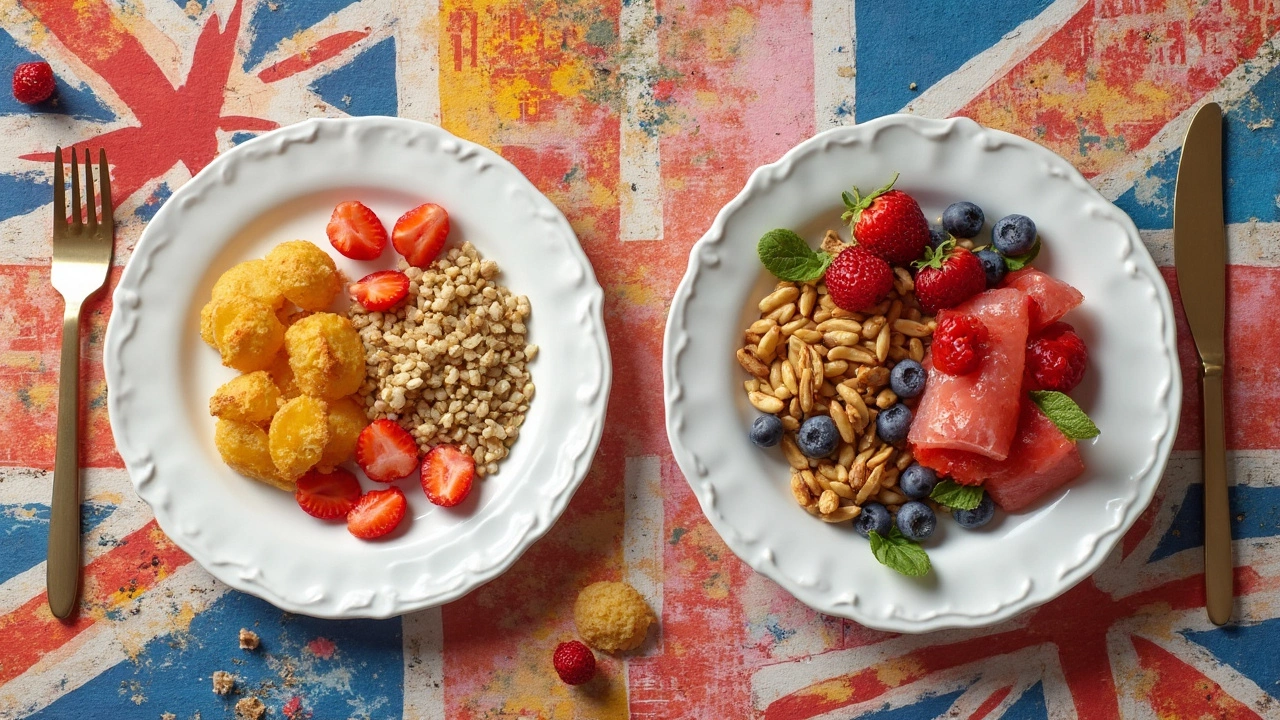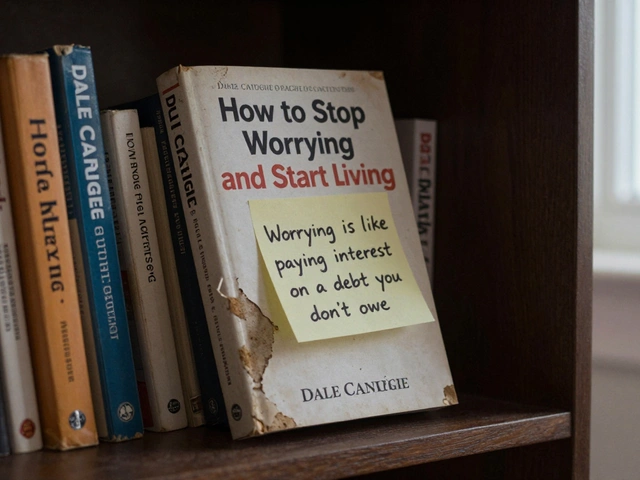Belly fat isn't just about how your jeans fit—it's closely linked to overall health, too. The good news? You don't need to swear off carbs forever or sit through boring salads day and night. Getting rid of belly fat comes down to eating foods that keep your blood sugar steady, fill you up, and help your body use fat for fuel. Crash diets and skipping meals usually backfire, making your body hold on tighter to fat, especially around your waist.
The best diet for belly fat loss sticks to whole foods, lots of fiber, enough protein, and very little added sugar. Think meals that actually satisfy—like a bowl of Greek yogurt with berries and nuts for breakfast, or a big plate of roasted veggies, chicken, and a scoop of quinoa for dinner. Forget about magic foods that promise to shrink your belly overnight. It’s all about steady, smart choices that add up over time.
- The Real Reasons Behind Belly Fat
- Popular Diets That Target Belly Fat
- What Science Says About Food Choices
- Meal Ideas to Flatten Your Stomach
- Simple Habits for Faster Results
The Real Reasons Behind Belly Fat
Most of us blame belly fat on getting older or being "big-boned," but the real reasons are a lot more straightforward. First off, your body decides where it stores fat based on hormones, stress, and what you eat. Sure, genetics play a role, but daily habits are usually the bigger driver.
Visceral fat is the type that hangs out deep in your belly, wrapped around your organs. It's the dangerous kind that can boost your risk of heart disease and type 2 diabetes. Unlike the softer fat you can pinch, visceral fat is sneaky and stubborn.
Here are some main reasons belly fat builds up:
- Eating lots of sugar and refined carbs: Foods like soda, white bread, and pastries make your body store extra energy as belly fat.
- Not moving enough: Sitting for long stretches slows how your body burns calories, so unused calories go straight to your gut.
- Stress and sleep problems: High stress raises cortisol, which tells your body to stash fat around your middle. Poor sleep messes with hunger hormones, making you crave junk food.
- Alcohol: Regular drinking, especially beer or sweet cocktails, is closely linked to a bigger waistline.
- Age and hormones: As early as your 30s or 40s, body composition starts to shift, making belly fat more common, especially after menopause for women.
Here's a quick look at some numbers:
| Factor | How Much It Matters |
|---|---|
| Sugar-sweetened drinks | People who drink daily are 27% more likely to have belly fat |
| Lack of activity | Sedentary adults store up to twice as much visceral fat |
| Chronic stress | Cortisol levels are 20% higher in people with big waistlines |
Bottom line: if you want to lose that stubborn belly, it’s less about spot-treating and more about tackling these root causes. Small changes with food, movement, and stress can start chipping away at the problem, so don’t get discouraged if it doesn’t happen overnight.
Popular Diets That Target Belly Fat
There’s no secret belly fat melting diet, but some eating patterns actually make it easier to get rid of that stubborn pouch. Let's break down what people are trying and what experts are really seeing.
The Mediterranean diet always pops up first for a reason. It focuses on veggies, fruits, olive oil, lean meats like chicken and fish, nuts, and a little bit of whole grains. Folks who stick to this style lose more weight around their middle compared to people eating low-fat or low-carb diets, according to a big study out of Spain.
Low-carb diets like keto or Atkins are still a hot topic. Cutting back on bread, pasta, and sugar does help with quick weight loss—most people drop several pounds in the first month, often from their belly first. But staying in hardcore keto mode for long can be tough and not everyone keeps the weight off. Plus, some people end up eating too much bacon and cheese, which isn’t great for your heart.
Intermittent fasting gets a lot of buzz too. Instead of changing what you eat, you change when you eat—like skipping breakfast or only eating in an 8-hour window each day. Many people find this helps shrink their waist, since tight eating windows make it harder to overeat.
- belly fat diet quick tip: No matter which diet you try, watch out for sugar and refined white flour—these spike blood sugar and help belly fat stick around.
Plant-based diets work for some, especially those who load up on beans, veggies, and nuts instead of fake meats or piles of bread. Plant foods have tons of fiber, which fills you up and feeds good gut bacteria that may help with fat loss around the waist.
Instead of following a strict rulebook, mix and match: lots of color on your plate, healthy fats in moderation, and plenty of protein to keep cravings under control. If a plan feels impossible to stick to after a few weeks, it’s not the right one for you—results only come if you can make it part of your real life.

What Science Says About Food Choices
If you want to lose belly fat, random food swaps won’t cut it. Researchers have actually tracked what happens when people change their eating habits, and the results are super clear—what you eat totally affects belly fat. Diets loaded with processed stuff, added sugars (especially in drinks), and refined carbs are a shortcut to more fat around the middle. The body stores those extra calories quickly as belly fat, and it’s tough to undo that trend by just exercising.
Scientists at Harvard crunched the numbers and found people who ate more whole grains instead of white bread or pasta had less belly fat. Why? Whole grains take longer to digest, so you stay full longer and your blood sugar doesn’t spike and crash. More steady blood sugar means lower insulin levels, which helps the body tap into stored belly fat for energy.
Another big factor is how much protein you get. Studies published in the American Journal of Clinical Nutrition show that higher protein diets help reduce cravings and burn more calories, making it way easier to stick to your plan. Lean meats, fish, eggs, tofu, and Greek yogurt all make a difference.
Not all fats are troublemakers. Unsaturated fats from things like avocados, nuts, and olive oil actually help your body shed stubborn fat, while trans fats (think packaged snacks or margarine) do the opposite. The trick isn’t to cut out fat, but to pick the right kind.
- Go for high-fiber foods: veggies, beans, lentils, berries, and whole grains
- Choose lean proteins daily
- Swap sugary drinks for water or sparkling water with lime
- Stick to healthy fats and skip trans fats
Focus your belly fat diet on these science-backed choices. Small tweaks like these, done consistently, shrink belly fat way better than wild diet trends or miracle products ever could.
Meal Ideas to Flatten Your Stomach
Forget complex meal plans with dozens of ingredients—when it comes to losing belly fat, keeping things simple works best. The trick is to build your meals around lean protein, lots of veggies, and smart carb choices. That combo helps you feel full for longer and keeps your metabolism humming. Here’s what that looks like on a plate.
- Belly fat diet breakfast: Scramble two eggs with spinach and a handful of cherry tomatoes in olive oil. Add half an avocado on the side. You get protein, fiber, and healthy fats, which studies show can help shrink waist size over time.
- Lunch can be a quinoa salad loaded with grilled chicken, chopped cucumbers, peppers, and a lemon-yogurt dressing. Quinoa adds fiber and keeps blood sugar steady, while chicken gives you muscle-building protein.
- Dinner idea: Salmon baked with broccoli and sweet potato rounds. Salmon is packed with omega-3s, and research links this healthy fat to lower belly fat stores—plus the fiber in broccoli helps keep cravings down.
Snacks matter, too. Reach for a cup of Greek yogurt with a sprinkle of seeds, or slice up some bell peppers and dip them in hummus. Skip those so-called “low-fat” snacks that actually spike your sugar and make your body store more fat around the middle.
Let’s get this straight: It’s not about starving or living off lettuce. You just want meals with enough protein (target at least 20 grams per main meal), lots of veggies, and whole, unprocessed carbs. Fill your grocery list with stuff like oats, cottage cheese, eggs, lentils, berries, lean beef, and buckwheat noodles. That way, prepping real meals is easy, and your chances of sticking to your goals go way up.

Simple Habits for Faster Results
If you want your belly to shrink, counting calories isn't the only thing that matters—everyday habits make a bigger difference than most people think. Let’s boil it down to what really helps based on what researchers and nutritionists keep seeing again and again.
- Eat mindfully. Studies show that people who sit down and really pay attention to their meals (no scrolling through their phone, no TV in the background) are less likely to overeat. Eating slowly gives your body time to feel full, saving you hundreds of calories a day without even noticing.
- Drink more water. Most of us walk around half-dehydrated and confuse thirst for hunger. Starting each meal with a glass of water helps you eat less and may help your stomach look flatter, since water helps with digestion, too.
- Prioritize sleep. Consistently getting less than 7 hours a night messes with your hunger hormones and makes your body store more fat around your belly. Better sleep equals better fat loss.
- Plan snacks. The best way to avoid donut temptations is to have healthy snacks ready. Sliced cucumber with hummus or a handful of almonds can keep cravings out of your way and fit well into a belly fat diet.
- Move after meals. A short 10-minute walk after lunch or dinner helps your body use up more sugar from your meals, so it’s less likely to end up as stored fat. It doesn’t have to be a workout—just a stroll with a friend or your dog works wonders.
Keep these habits simple and doable. Tiny changes, repeated daily, can give you results that last way longer than a crash diet ever could.










